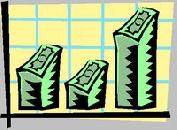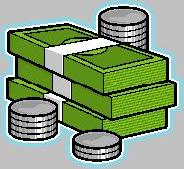
 |
|
| Financial Terms | |
| Aggregate Expenditure Curve |
|
Information about financial, finance, business, accounting, payroll, inventory, investment, money, inventory control, stock trading, financial advisor, tax advisor, credit.
Main Page: inventory, money, investment, inventory control, credit, financial, business, payroll, Also see related: financing, mortgage, homebuyer, home insurance, property, first time homebuyer, home buyer, home financing, home, |
Definition of Aggregate Expenditure Curve
Aggregate Expenditure Curveaggregate demand for goods and services drawn as a function of the level of national income.
Related Terms:Capital expendituresAmount used during a particular period to acquire or improve long-term assets such as Flattening of the yield curveA change in the yield curve where the spread between the yield on a long-term Indifference curveThe graphical expression of a utility function, where the horizontal axis measures risk and J-curveTheory that says a country's trade deficit will initially worsen after its currency depreciates because Non-parallel shift in the yield curveA shift in the yield curve in which yields do not change by the same Parallel shift in the yield curveA shift in the yield curve in which the change in the yield on all maturities is Planned capital expenditure programCapital expenditure program as outlined in the corporate financial plan.  Riding the yield curveBuying long-term bonds in anticipation of capital gains as yields fall with the Spot rate curveThe graphical depiction of the relationship between the spot rates and maturity. Steepening of the yield curveA change in the yield curve where the spread between the yield on a long-term Stopping curveA curve showing the refunding rates for different points in time at which the expected value Stopping curve refunding rateA refunding rate that falls on the stopping curve. Theoretical spot rate curveA curve derived from theoretical considerations as applied to the yields of Yield curveThe graphical depiction of the relationship between the yield on bonds of the same credit quality Yield curve option-pricing modelsModels that can incorporate different volatility assumptions along the Yield curve strategiesPositioning a portfolio to capitalize on expected changes in the shape of the Treasury yield curve.  capital expendituresRefers to investments by a business in long-term Yield CurveA graphical representation of the level of interest rates for learning curvea model that helps predict how labor time Discount curveThe curve of discount rates vs. maturity dates for bonds. Par yield curveThe yield curve of bonds selling at par, or face, value. Spot curve, spot yield curveSee Zero curve. Yield curveGraph of yields (vertical axis) of a particular type of security Zero curve, zero-coupon yield curveA yield curve for zero-coupon bonds; ExpenditureA payment or the incurrence of a liability by an entity. yield curveGraph of the relationship between time to maturity and yield to maturity. Aggregate DemandTotal quantity of goods and services demanded.  Aggregate Demand CurveCombinations of the price level and income for which the goods and services market is in equilibrium, or for which both the goods and services market and the money market are in equilibrium. Aggregate Production FunctionAn equation determining aggregate output as a function of aggregate inputs such as labor and capital. Aggregate SupplyTotal quantity of goods and services supplied. Aggregate Supply CurveCombinations of price level and income for which the labor market is in equilibrium. The short-run aggregate supply curve incorporates information and price/wage inflexibilities in the labor market, whereas the long-run aggregate supply curve does not. Autonomous ExpenditureElements of spending that do not vary systematically with variables such as GDP that are explained by the theory. See also exogenous expenditure. Exogenous ExpenditureSee autonomous expenditure. Laffer Curvecurve showing how tax receipts vary with the tax rate. Monetary AggregateAny measure of the economy's money supply. Phillips CurveRelationship between inflation and unemployment. Yield curveA graph showing how the yield on bonds varies with time to maturity. Capitalized Cost An expenditure or accrual that is reported as an asset to be amortized againstfuture-period revenue. Capitalized Expendituresexpenditures that are accounted for as assets to be amortized Replacement Capital ExpendituresCapital expenditures required to replace productive Aggregate planningA budgeting process using summary-level information to Related to : financial, finance, business, accounting, payroll, inventory, investment, money, inventory control, stock trading, financial advisor, tax advisor, credit. |